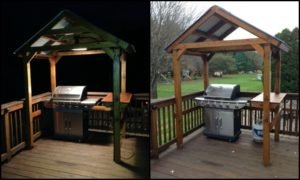Last Updated on October 24, 2025 by teamobn
Budgeting money seems to get more and more difficult each year for most, if not all of us. We have our daily expenses plus a handful of bills to pay every month – some of them getting higher!
One of which is our electricity bill. It might be due to climate change – cold places get colder and warm places get warmer – or the energy charges getting more expensive. At least in some countries both are the case.
Keeping your home warm during winter doesn’t have to mean higher bills. This simple DIY insulated curtain project helps trap heat indoors and cut energy waste — one of several smart ways to winter-proof your home. You can also explore other winter energy saving tips to keep your space comfortable and efficient all season long.
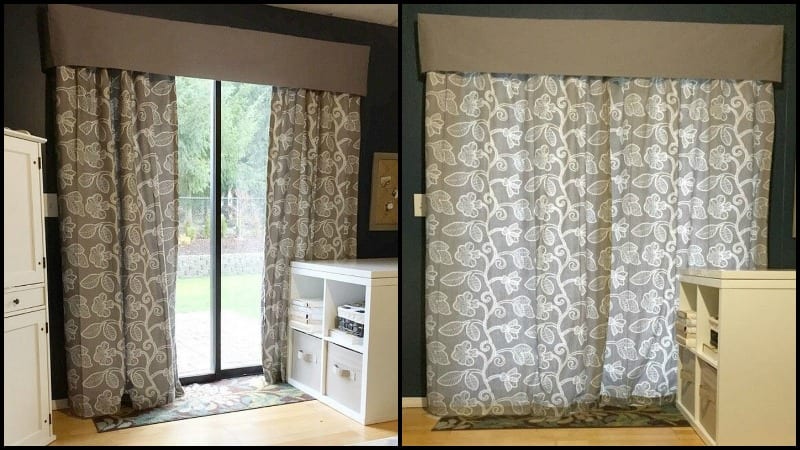
It’s a good thing that electronics companies are able to improve their products which are now more energy efficient. But aside from replacing old appliances with modern ones it would also be wise to help lessen the work of your home equipment for an even lower energy consumption.
This idea is one that you should do to have better control of your room temperature. Some of you live in places that can get unbearably cold, so we suggest these DIY insulated curtains to help maintain heat.
Think you could use some of these curtains? 🙂
Crafting an Insulated Curtains DIY Project
Materials:
- 2 sets of Curtains
- Curtain Rod and Mounts
- 4 yards of Velcro (industrial strength)
- 2 1/2 yards of Fabric (valence)
- 2 pcs of 1″ wide, 73″ long Wood Stakes
- 4″ wide, 79″ long Wood
- Batting
- Staples and Screws
- Thread
Tools:
- Sewing Machine
- Hammer
- Staple Gun
- Power Drill
Steps:
Adding Velcro to the curtains is the very first step. This Velcro is what will seal the edges to the wall.
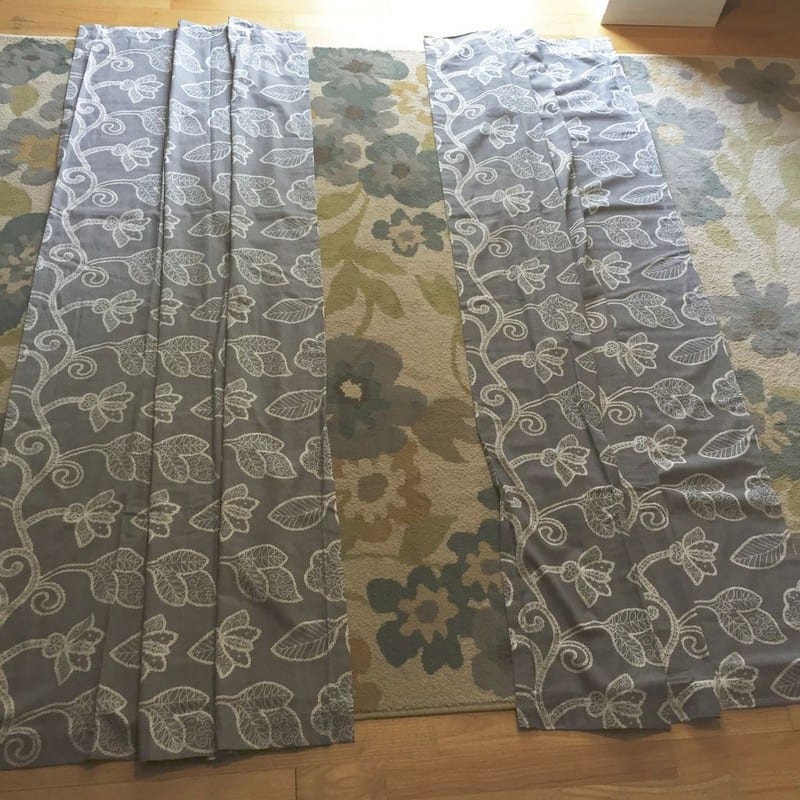
First lay out your curtains exactly how they will look when hanging. Then separate the velcro pieces. You will be using the rough side of the Velcro. Place the soft Velcro pieces on the side for later.

Now center and pin the two yards of the rough Velcro pieces to the left panel outer edge and one on the right panel outer edge of the curtains. You are attaching the Velcro to the sides of the curtains that will touch the wall.
*Make sure that you are pinning the Velcro to the right side/front side of the curtain.

Apply them 3/8″ away from the edge.
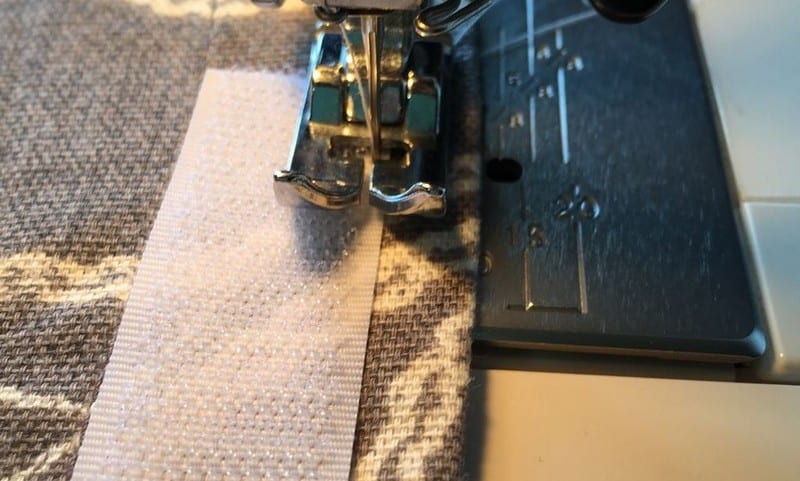
Once it is in place sew along all four edges of the Velcro strips.
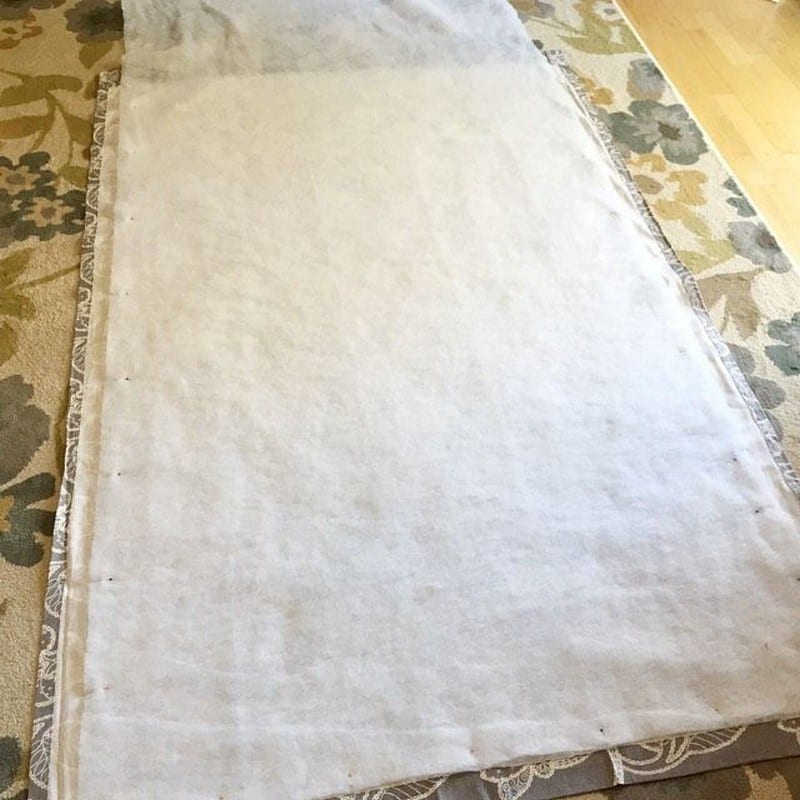
After the velcro is attached to the outer edges of the curtain panels you are ready to add the batting. The batting will act as a sort of honeycomb effect to trap air and slow down the heat transfer.
Turn one of the curtain panels that have the velcro on it face down and lay it out flat. Roll the batting onto the fabric and center it within the Curtain.
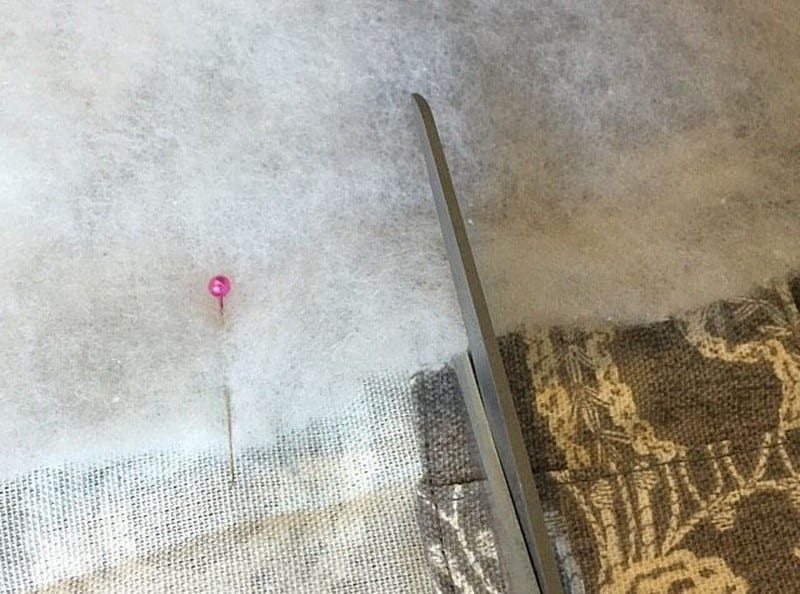
Pin it down on all four edges. Make sure the batting only goes about 1/2 inch past the loophole area(where the curtain rod goes). You can end the batting 3 inches from the bottom of the curtain.

Sew the batting down on all four edges.
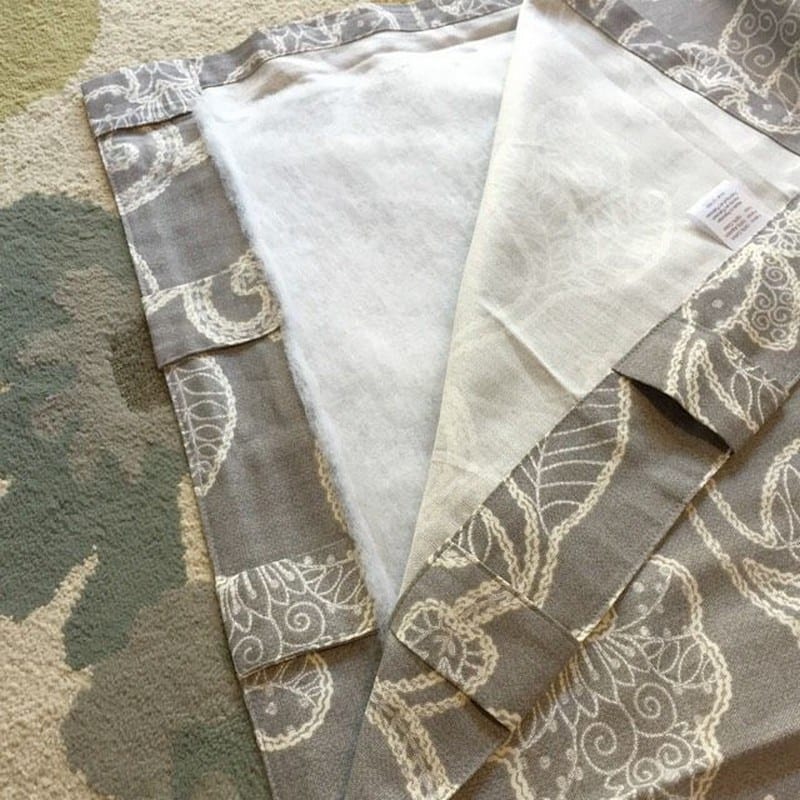
After the batting is attached you will grab your other curtain panel that mirrors this one and does NOT have velcro on it. Place the curtain panel on top of the batting with the wrong side touching the batting. Line up the seams and edges and pin the left side, top, and right side.
Sewing the curtain panels together:

Sew the very top edge 1/4″ away from the edge.

Then sew below on the bottom of the loophole seam line which should be about 2 inches parallel to the top edge. You will be creating the hole for the curtain rod to go in. If you have curtains that have grommet holes don’t fret, simply sew the curtains together right below the grommet line. Cut any excess batting that is above the line. The grommets should line up and work on the curtain rod as it normally would.
Now sew the left edge and the right edge. Be careful on the the velcro side. You should be sewing on the 3/8″ seam allowance on the side of the velcro.
Repeat with the two panels for the other side. When you are finished you should have 2 thicker, two-sided curtain panels. The velcro side of the panels will face the wall and cannot be seen.
*Some curtains are larger than the width of the batting, if you make sure they are the same size it would make things a lot easier! If you have the same size then simply sandwich the batting between curtain panels front and back. One of them will have the velcro, one will not. Make sure the curtain panel wrong sides are touching the batting.
The next step is attaching the curtains to the wall. This will seal the curtains lowering your heat loss significantly.

First you will attach your soft velcro to the 1″ wide wood stake, by using a staple gun. Each staple should be about 4 inches away from the wood. Make sure that the velcro is flat and taut as you go.

After the velcro stakes are done you will attach it to the velcro on the curtain. This will help you get perfect placement.

Place it onto the wall exactly where you want the velcro to go. About 1 inch away from the edge would be good. Mark it with a pencil. Remove the wood velcro piece from the curtain and nail it to the wall where you marked the placement.
Now stick the curtain panels to the velcro on the wall and make sure they are exactly where you want them. You should not be able to see the wood velcro pieces when the panels aren’t attached. They should be perfectly hidden all the time.
*This is the best option for sticking the curtains to the wall – easy removal without a ton of holes in the wall was one of them, cheap and effective.
Your curtains are finished and sealed nicely to the wall but we still have a gap at the top that drafts will come through. To solve this, make a curtain valence that covers the holes at the top and snugly fits over the curtain.

First you will use brackets and attach them to the wall about 1/2″ above the curtain rod. Cut your wood the same length as the curtain rod but 1″ wider.

The wood in this tutorial measured 4″ wide x 79″ long. Screw your wood down on the brackets.
*You can use very thin wood because it will only have light fabric attached to it. Molding, or even thick foam would work just fine also.

Now you will cut out your fabric for the valence. For your length you measure the side edges and front edge of the wood and add them all together(4″ + 4″ + 79″ = 87″). Then decide how long you want the valence to drape, add the width of the wood and times that by 2. Here, the valance drapes 12″, so 4″ is added to the width of the wood, multiplied by 2 so that the fabric could be folded in half ((12″ + 4″) x 2 = 32″). Folding makes the fabric thicker and also makes it so you don’t have to hem the edge. Measurements here were 32″ wide x 87″ long.
For the batting measurement you will use the same 87″ length. The width of the batting will be your desired length plus the width of the wood minus 1 inch(12″ + 4″ -1″ = 15). This batting measured 15″ wide x 87″ long.

Once you have everything cut out you are ready to attach the batting to the wood. Lay the batting onto the wood with the edge hitting the wall.

You are going to wrap the corners exactly like a present. Staple the batting corner edge and the top back edge next to the wall.
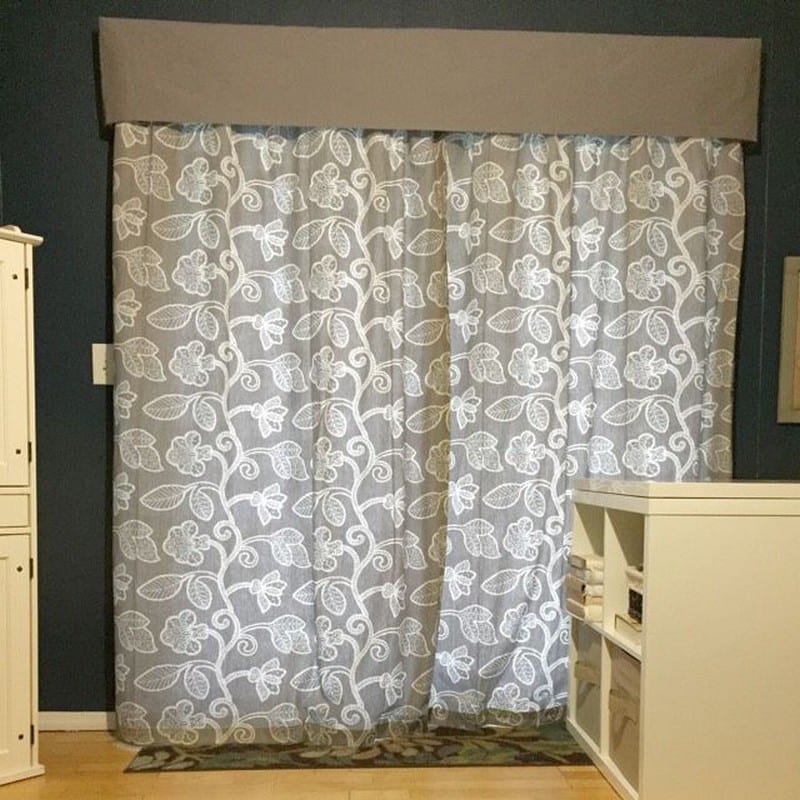
For the fabric you need to fold it in half and iron it very well. Then attach it the same way you did the batting just make sure the raw edges are touching the wall and the fold is hanging.
After that you are done! 🙂 By now if you followed the tutorial you should have two sided insulated curtains that not only function well but look great too!
These are definitely a great help to your room heaters. You would feel a significant temperature difference by touching the inside of the curtain and comparing it to the outside. Did we mention that these are great for the summer as well? They will keep your room cool on those hot summer days.
Could this be your next weekend project?
R-Value Basics for Window Fabrics
Understanding R-value helps you design curtains that insulate. This guide explains how fabrics, batting, and air gaps affect heat flow through windows so your insulated curtains DIY project performs reliably.
What R-Value Means for Curtains
R-value measures resistance to heat flow. Higher numbers mean better insulation. Curtains don’t work alone. The whole assembly matters. That includes fabric layers, interlining, side seals, and the headbox or pelmet.
Think of your window, frame, and drape as one system. Improve each part and the total R-value rises. Use this lens when planning an insulated curtains DIY project so choices add up to real gains.
How Fabrics and Batting Trap Air
Insulation happens when you trap still air in many tiny pockets. Lofted batting, flannel interlining, or wool blends slow conduction and convection. More loft gives more trapped air, up to a point. Overstuffing can sag and open leaks.
Quilting or tacking prevents slumps and keeps layers aligned. Dense outer fabric blocks drafts. A smooth liner reduces friction with the glass and helps stacking. Balance loft, weight, and manageability for an insulated curtains DIY project that stays tidy.
The Role of Seals, Pelmets, and Air Gaps
Edge leaks kill performance. Side hook-and-loop, magnetic strips, or tight returns stop bypass airflow. A pelmet or cornice blocks the warm air loop at the top. Generous wall overlap at sides and sill cuts infiltration.
A light bottom weight helps the hem seal. Aim for continuous contact without straining hardware. Smart sealing often boosts results more than thicker batting. Design these details early in your insulated curtains DIY project.
Typical R-Value Expectations
Expect modest but meaningful gains. Fabric layers and batting can raise the effective R of a window assembly when edges seal well. Diminishing returns appear after moderate loft. Test with a candle or smoke pen to find leaks. IR photos help too.
Small upgrades compound. Better overlap, a snug pelmet, and tuned hems can outperform a bulky but leaky build. Track comfort changes room by room during your insulated curtains DIY project.
Moisture and Condensation Considerations
Warm indoor air holds moisture that can condense on cold glass. Persistent condensation can damage frames and invite mold. Keep humidity in check, especially in winter. Add a thin spacer or breathable liner to let limited airflow dry the cavity.
Avoid plastic that traps water against wood. Wipe frames during cold snaps. Inspect corners and sills after storms. Good drying paths protect your investment and extend the life of your insulated curtains DIY project.
Conclusion
A well-planned insulated curtains DIY project can cut drafts and stabilize room temps. Measure carefully, seal the edges, and add a pelmet so the system works as one. Choose lofted batting and a sturdy face fabric to trap air and block flow. Manage moisture with breathable liners and check frames during cold snaps.
Track comfort and energy use after install, then fine-tune overlap or weights for even better results. For even bigger savings beyond this project, explore our broader strategies for home energy efficiency.
It’s a practical guide to help you cut energy costs throughout the year — from insulation fixes to smarter appliance use. For a more ways to save energy, check out our DIY solar furnace project next!





